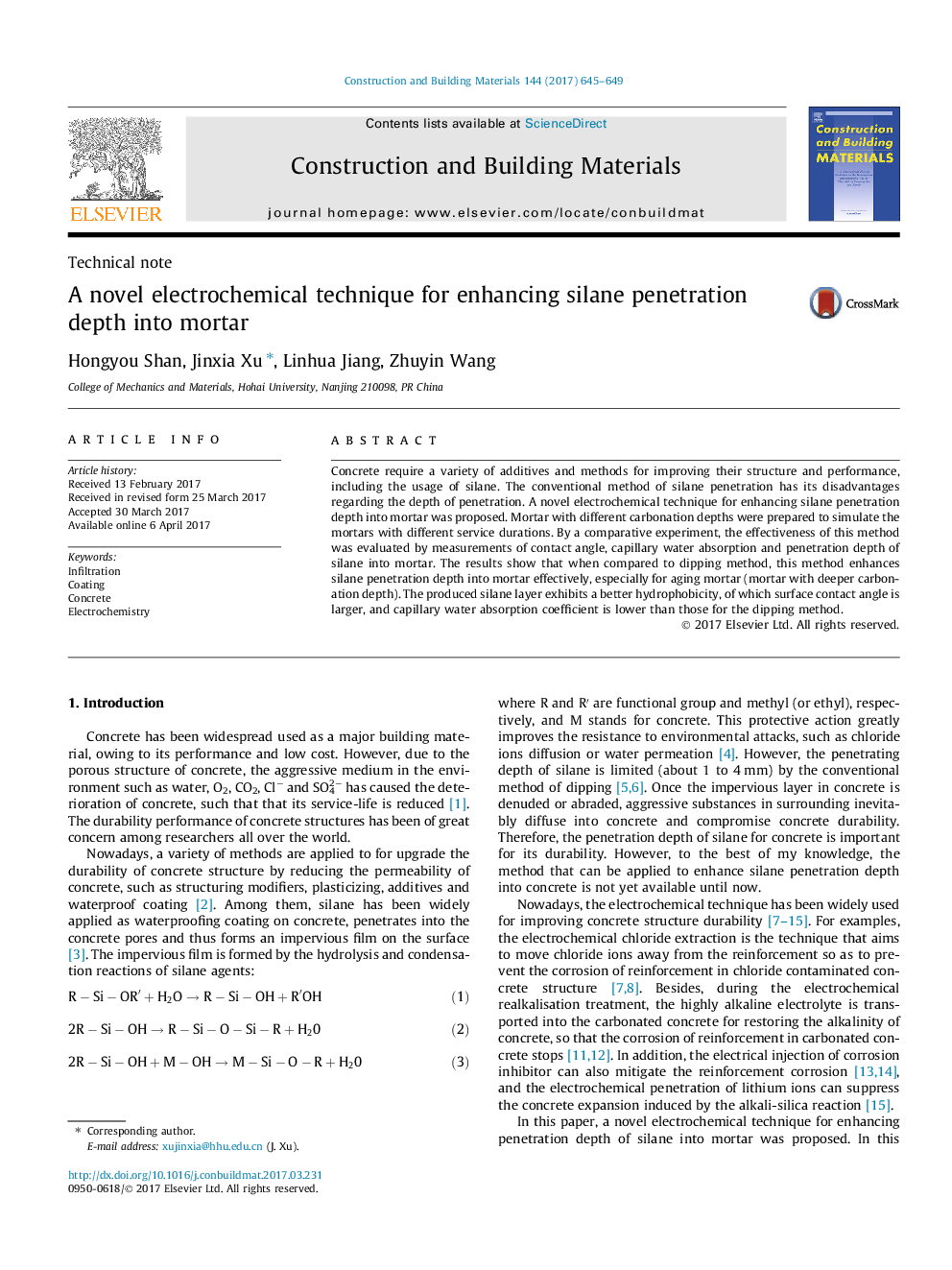| کد مقاله | کد نشریه | سال انتشار | مقاله انگلیسی | نسخه تمام متن |
|---|---|---|---|---|
| 4913208 | 1428762 | 2017 | 5 صفحه PDF | دانلود رایگان |
عنوان انگلیسی مقاله ISI
A novel electrochemical technique for enhancing silane penetration depth into mortar
ترجمه فارسی عنوان
یک تکنیک الکتروشیمیایی جدید برای افزایش عمق نفوذ سیلان به ملات
دانلود مقاله + سفارش ترجمه
دانلود مقاله ISI انگلیسی
رایگان برای ایرانیان
کلمات کلیدی
نفوذ، پوشش بتن، الکتروشیمی،
ترجمه چکیده
بتن نیاز به انواع مختلف افزودنی ها و روش ها برای بهبود ساختار و عملکرد آنها، از جمله استفاده از سیلان. روش معمول نفوذ سیلان دارای معایب مربوط به عمق نفوذ است. یک روش الکتروشیمیایی جدید برای افزایش عمق نفوذ سیلان به ملات پیشنهاد شده است. ملات با عمق کربنات مختلف برای شبیه سازی ملات با زمان های مختلف خدمات تهیه شد. با استفاده از یک آزمایش مقایسه ای، اثربخشی این روش با اندازه گیری زاویه تماس، جذب آب مویرگی و عمق نفوذ سیلان به ملات مورد ارزیابی قرار گرفت. نتایج نشان می دهد که در مقایسه با روش غوطه ور کردن، این روش عمق نفوذ سیالان را به ملات عمدتا به ویژه برای ملات پیری (ملات با عمق کربناته عمیق) افزایش می دهد. لایه سیلان تولید شده دارای هیدروفوبیتی بهتر است که از آن زاویه تماس سطح بزرگتر است و ضریب جذب آب مویرگی کمتر از روش های غوطه ور است.
موضوعات مرتبط
مهندسی و علوم پایه
سایر رشته های مهندسی
مهندسی عمران و سازه
چکیده انگلیسی
Concrete require a variety of additives and methods for improving their structure and performance, including the usage of silane. The conventional method of silane penetration has its disadvantages regarding the depth of penetration. A novel electrochemical technique for enhancing silane penetration depth into mortar was proposed. Mortar with different carbonation depths were prepared to simulate the mortars with different service durations. By a comparative experiment, the effectiveness of this method was evaluated by measurements of contact angle, capillary water absorption and penetration depth of silane into mortar. The results show that when compared to dipping method, this method enhances silane penetration depth into mortar effectively, especially for aging mortar (mortar with deeper carbonation depth). The produced silane layer exhibits a better hydrophobicity, of which surface contact angle is larger, and capillary water absorption coefficient is lower than those for the dipping method.
ناشر
Database: Elsevier - ScienceDirect (ساینس دایرکت)
Journal: Construction and Building Materials - Volume 144, 30 July 2017, Pages 645-649
Journal: Construction and Building Materials - Volume 144, 30 July 2017, Pages 645-649
نویسندگان
Hongyou Shan, Jinxia Xu, Linhua Jiang, Zhuyin Wang,
